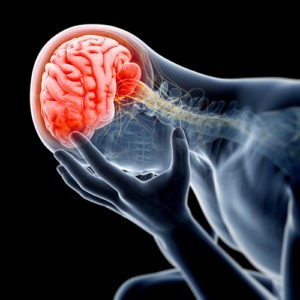Category: Brain Injury

The brain can sustain damage as a result of medical malpractice. Some minor incidents only cause temporary disruption to the brain. A significant event can leave the patient with devastating harm to the brain and change their life forever. Types of Brain Injuries Caused by Medical Malpractice There are several ways you can suffer a
Read More
Some patients with locked-in syndrome retain a sense of touch despite their global paralysis and inability to communicate verbally. Others, however, lose all sensory function in their torso and lower body. In incomplete injuries, patients may experience sensory losses on only half their body or otherwise retain only a partial sense of touch. When a
Read More
You cannot be physically functional with an incomplete form of locked-in syndrome. Most locked-in syndrome patients never regain mobility in their face, speech, or other body movements. However, there have been rare cases where an individual improves if the underlying cause is treated. For example, shrinking a tumor that caused the disorder could increase functionality.Cognitively,
Read More
Cognitive functions are not always impaired by locked-in syndrome. Many locked-in syndrome patients can have normal cognitive functions such as reasoning and memory. He or she can hear, think, and see but are paralyzed except for limited eye movements. Each case is unique, but for the most part, locked-in syndrome victims keep their cognitive functions.
Read More
A person with locked-in syndrome can communicate, but it is exceedingly difficult, as they cannot talk or move any part of their body other than their eyes. To convey their thoughts or ideas, they must rely on eye movement patterns, and others must learn to read these patterns and understand them. This process can be
Read More
Because locked-in syndrome affects all voluntary muscles, including those that control breathing, pulmonary complications may be a concern for patients. Upon developing the condition, many patients must undergo a tracheotomy to have a breathing tube inserted, as they lack the muscle movement even to take a breath on their own. The constant immobilization caused by
Read More
The difference between locked-in syndrome and a vegetative state is that a person with locked-in syndrome retains their full mental faculties, whereas a person in a vegetative state does not. However, because locked-in syndrome causes the loss of all physical capabilities and all muscle movement other than the eyes, people can easily mistake it for
Read More
Locked-in syndrome affects the pons, an area of the brain stem that helps transmit signals between the brain and spinal cord. The pons plays a significant role in muscle movement. When you a muscle, the signal starts in your brain and passes through the pons to your spinal cord, which relays it to the muscle.
Read More
The main symptom of locked-in syndrome is paralysis of every voluntary muscle in one’s body except those controlling eye movement. It is the equivalent of having quadriplegia along with no movement in the facial muscles, diaphragm, or intercostal muscles, making it impossible to swallow or even breathe without assistance. Locked-in syndrome does not, however, affect
Read More
Locked-in syndrome is not immediately fatal on its own. But it generally leads to medical complications that shorten the lives of affected persons. According to a study published in the Orphanet Journal of Rare Diseases (OJRD), even a locked-in syndrome patient who is medically stable has only a 40% chance of living another 20 years,
Read More
When you are conscious but unable to move, you can understand what is going on around you but cannot easily express your thoughts to others. This can create a frustrating situation, mainly when, along with being conscious, you can see and hear clearly. With full cognitive function and the ability to understand conversations, you invariably
Read More
The exact prevalence of locked-in syndrome, called LIS, is not known. However, it is an extremely rare condition. There is less than one case out of every million people, with only a few dozen cases officially diagnosed. Those whose loved one suffers from this devastating syndrome may try to care for their family member at
Read More
A person with locked-in syndrome can see, hear, think clearly, recognize faces, and understand everything that is going on around him or her. But aside from the muscles controlling the eyes, he or she cannot move a single body part, nor can he or she speak or even breathe without assistance. Locked-in syndrome is one
Read More
Damage to the pons is the usual cause for locked-in syndrome. The pons is a part of the brain stem responsible for relaying nerves between the brain and spinal cord. When the transmission of these nerves gets interrupted or cut off, the brain cannot send the proper signals to the muscles to move or contract.
Read More
The exact numbers of cases of locked-in syndrome are difficult to find in medical literature, but many consider it a rare condition. A typical person is likely to live his or her entire life without ever meeting or knowing anyone with locked-in syndrome. But for the small percentage of people who develop it, locked-in syndrome
Read More
The overwhelming majority of patients with locked-in syndrome never make a full recovery. Most never make any improvement, even a small or incremental one. There are cases of patients completely reversing the condition, but they are exceedingly rare and usually happen because the underlying cause is treatable and gets addressed within hours of onset. Somewhat
Read More